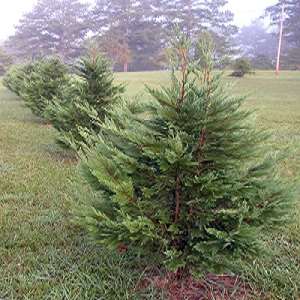By Tim Daly
Although Georgia has received rainfall over the past few weeks, most of the state is still in a drought. The rain has improved the situation, but whether the rainfall will continue is uncertain.
Many plants have sustained damage and died as a result of the continued dry conditions in the fall. Much of the state received little or no rain from early August until December. The damage caused by long periods without rain can take months or years to develop. To complicate matters, Georgia has had a couple of abnormally wet years that have caused some root damage, making plants even more susceptible to a lack of water.

Several coniferous plants are turning brown and dying. Leyland cypress trees, which are frequently planted too close together, are suffering from a fungal canker disease that is worsened by dry conditions. Symptoms start with individual branches dying, and on many trees, multiple branches begin to die, which causes the whole tree to perish. There are no fungicides available to treat the problem. Only pruning dead branches and applying water to affected trees can improve the likelihood of survival.
Many Japanese cryptomeria and arborvitae trees, which grow up to 30 feet in height and have an attractive pyramidal shape, are suffering from the prolonged dry spell too. These trees die from the top down. When planted in rows, one tree may start suffering before others, leading many to speculate that the cause is a disease. Japanese cryptomeria trees are sensitive to soil water, and too much or too little can cause them to deteriorate.
Pine trees can be seen dying or beginning to do so. The dry conditions have impacted them, leading to their decline. Those around rocky outcrops, such as Stone Mountain and Arabia Mountain in DeKalb County, Georgia, have the added stress of being in shallow soil and in the presence of exposed rock that enhances the stress of heat and drought.
One of the most destructive insects of pines is the pine beetle. Healthy trees can repel the pest, but those that are under stress are less able to do so. Pine beetles are attracted to trees in distress. They bore into a distressed tree and begin tunneling. The insects do not feed on the wood, but instead infest the trees with a fungus that provides a food source.
Once a tree becomes infested, nothing can be done other than removing it. Nearby trees can be sprayed with an insecticide that offers some level of protection, but that is no guarantee the pine beetle won’t spread. Homeowners do not have access to the specialized equipment and pesticides that tree care companies are licensed to apply. For help finding a tree care company, refer to the Georgia Arborist Association’s website at georgiaarborist.org.
Many other species of landscape plants are also sustaining damage. The damage may take some time to become apparent, even if we do receive adequate amounts of rain. Applications of supplemental water may help. These plants should be watered once or twice a week, and long enough for deep penetration of the soil into the plant’s root zone. Avoid watering that only penetrates the upper inch or so of the ground as this encourages roots not to grow deep, which makes them more vulnerable to dry conditions.
Source: uga.edu